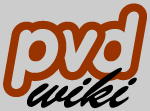
Disk Wheel Lacing Pattern.
Shimano recomends a specific lace rotation for each side of each wheel in their Hydraulic Disc Brake - BR-M765 Service Instructions. One issue most bicycle wheelbuilders will face when working with this pattern is that lacing the rear wheel it is done from one side to the other (like a motorcycle wheel), rather than from the inside to the outside as has been standard practic with bicycles for years. The goal of this pattern is to keep the outside spokes on each respective side in full tension while brakeing and only the drive side of the rear wheel being changed. See below from Shimano instructions:
Notice that the Shimano lacing pattern is very particular about lacing for direction and sides on both front and rear wheels. The rear is laced like a motorcycle wheel. Any wheel lacing pattern must be designed around braking, not necessarily driving. Breaking forces are tenfold driving forces.
The Shimano pattern does specify that the outside spokes are tensioned and the inside spokes are compressed under breaking. Only on the drive side of the rear wheel is this not the case. Now, Shimano has begun saying that the non-breaking side of the front wheel (when using a HB-M965) can be radial. A poor choice in my opinion.
Magura Instructions specify:
"No radial lacing with disc brake wheels! Head-inside-spokes (=arc outside spokes) have to be pulled, i.e. these spokes point forward on the front wheel; on the back wheel these spokes point forward on the rotor side and backwards on the drive side." This agrees with Shimano.Chris King Instructions specify:
"The front ISO Disc should be laced 3-or-more-cross with the rotor (left) side pulling spokes (relative to braking direction) heads out/elbows in (when laced 3-cross). The final cross of the pulling spoke must be on the outside so that as braking force is applied, increased pulling spoke tension will pull the crossed spokes towards the center of the hub and away from the caliper. Lace the wheel symmetrically."Note that this disagrees with the Shimano in regards to the front wheel, but does not refer to the rear wheel. Since there is a discrepancy, Shimano prevails. Shimano actually employs real engineers, makes far more designs of every kind that meet every price point and performance level. They truly know what they are doing. King makes very nice hubs and headsets, but the devil is in the low end. The high end is easy, the low end is hard.
One problem that king does have is that they still make reference to using BullShot grease. A product no longer manufactured.
The traditional 32 hole 3-Cross Spoke pattern is hard to beat. It spreads the load around the rim and hub while resisting wind-up under power and braking. A 4-Cross pattern is almost totally unnessesary due to the selection of downhill rims available. I prefer using 32 hole rims on all my mountain bikes since I may destroy a rim at anytime and most shops do not stock a selection of 36 hole rims.
Very light and non-aggresive riders can benifit from a 28 hole 2-Cross pattern. I built a set of road wheels like this for my wife. They are light and strong enough for what she puts them through. Rims will always be a special order item when running 28 or 24 hole patterns.
Spokes, Nipples, and Rims.
Spokes must be as light as possible for performance riding. I prefer to replace broken spokes more often than running heavier wheels. With the advent of disk brakes, wheel runout is far less important than in the past. This means one to three broken spokes will not ruin a ride.
Preferred spokes for MTB are: DT Revolution 1.8/1.5 (F), DT Competition 1.8/1.6 (F/R), and DT Champion 1.8 (R) OR Wheelsmith XL15 (1.8/1.5 - F), Wheelsmith DB 15 (1.8/1.55 - F/R) and Wheelsmith SS15 (1.8 - R). When choosing butted spokes, try to choose a spoke with the longest tapered section. Some butted spokes will have abrupt butts that act as stress risers.
Alloy spoke nipples should always be used. A busted nipple is quick and easy to fix and the weight savings is extreme.
Spokes should be prepped using Loctite Threadlocker 242 (Blue) or Threadlocker 222 (Purple). This keeps the spokes from loosening up and provides some lube during assembly.
Spoke tension should be as high as possible without causing nipple or rim failure. A small amount of light grease under each nipple will help you attain high tensions.
The harder you ride, the wider and heavier the rim you will need. The rim (as well as spoke tension) is the real key to wheel strength. Again, since I prefer light wheels to maintanace, I start with light rims and work up to heavier rims as I destroy the light ones. A wider rim is always prefered to a narrow rim. This helps the tires flex and grip the ground better as well as resisting the tendency to roll off the rim.
Suggested Hubs
Trailriding: Specialized Stout Disk w/Skraxle (Front, 9mm THRU, #SP3102), Ritchey Pro Disk w/Skraxle (Front, 9mm THRU but refered to as 14mm), Hadley (Front, 9mm THRU), Hadley (Front, 20mm THRU), Hadley (Rear, 10 QR, 10mm THRU, 12mm THRU)
XC MTB Racing: Shimano XTR
Road: Shimano Dura-ace, Also Ritchey WCS Road Z-Hub (Rear, Lighter Rider)
BMX: Profile Racing BMX Race Cassette Hubset w/Titanium Rear Cog/Drivers (9-11t) and Titanium Imperial Chainwheel (25t)
Suggested Rims
Trailriding: Mavic XM321 Disk (28mm, 517g.) or Mavic XC717 Disk (23mm, 395g.)
XC MTB Racing: Mavic XC717 Disk (23mm, 395g.) or Crossmax SL Disk Wheelset
Road: Ritchey Road Aero Pro (F, 395g.), Ritchey Road Aero Pro OCR (R, 415g.)
BMX: Sun BFR (Fun), Sun ICI-1(Race)
This site has not been
updated since Fall 2006.
Since then, all new projects
have been place on my wiki
site.
If you like what you see on
this site, Make sure to go
to the wiki for even better
projects.